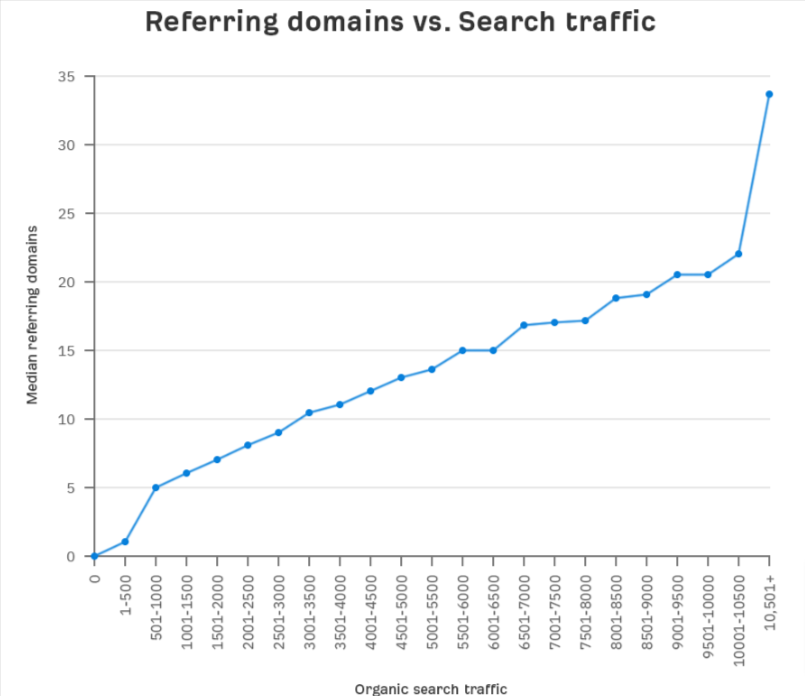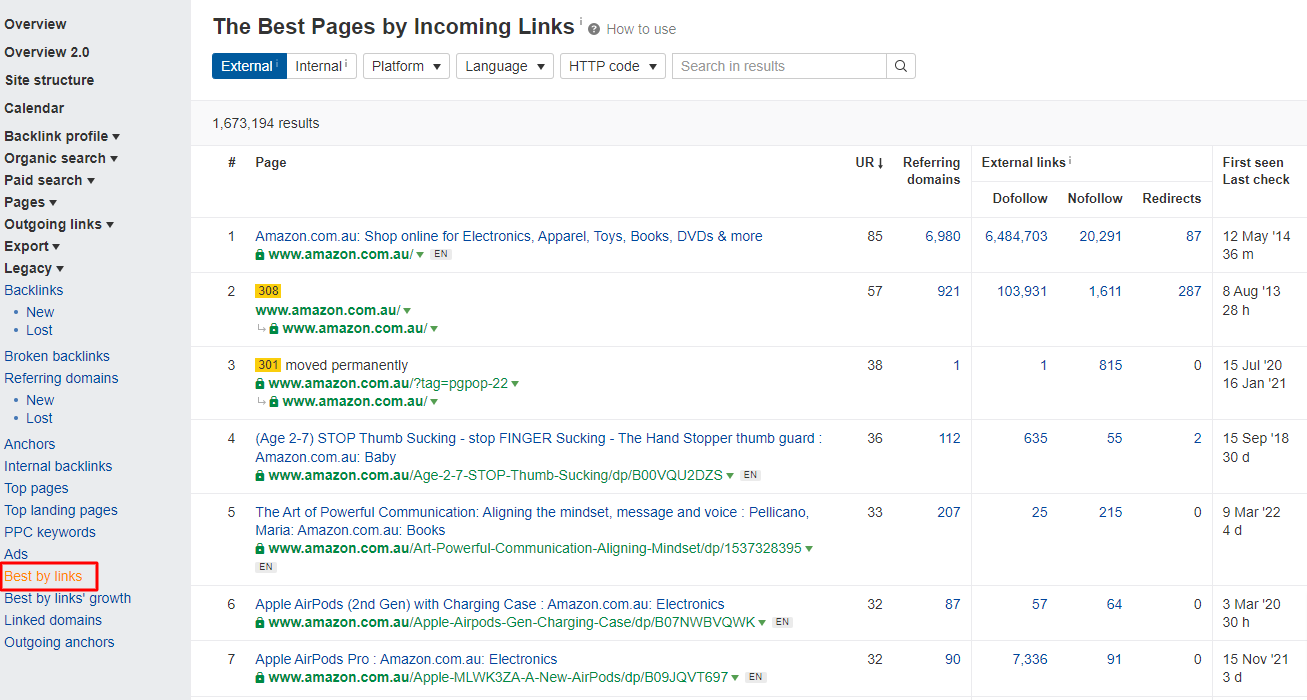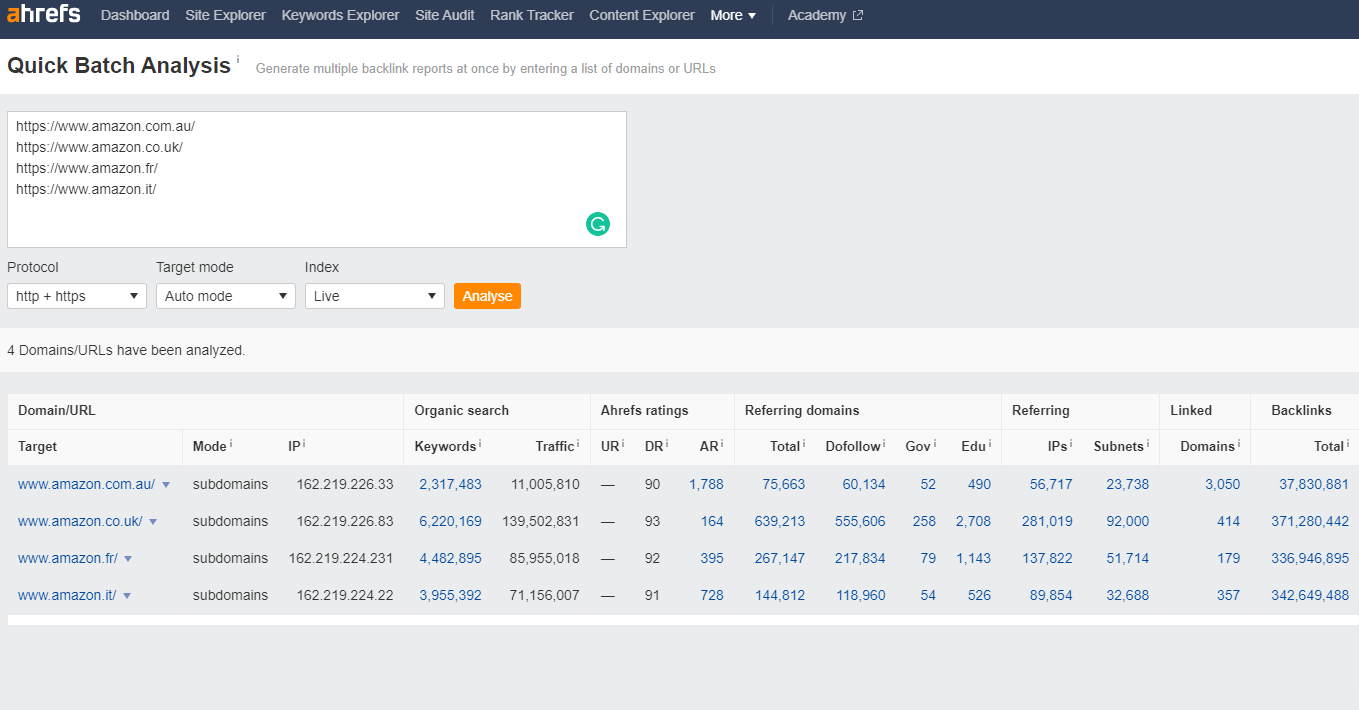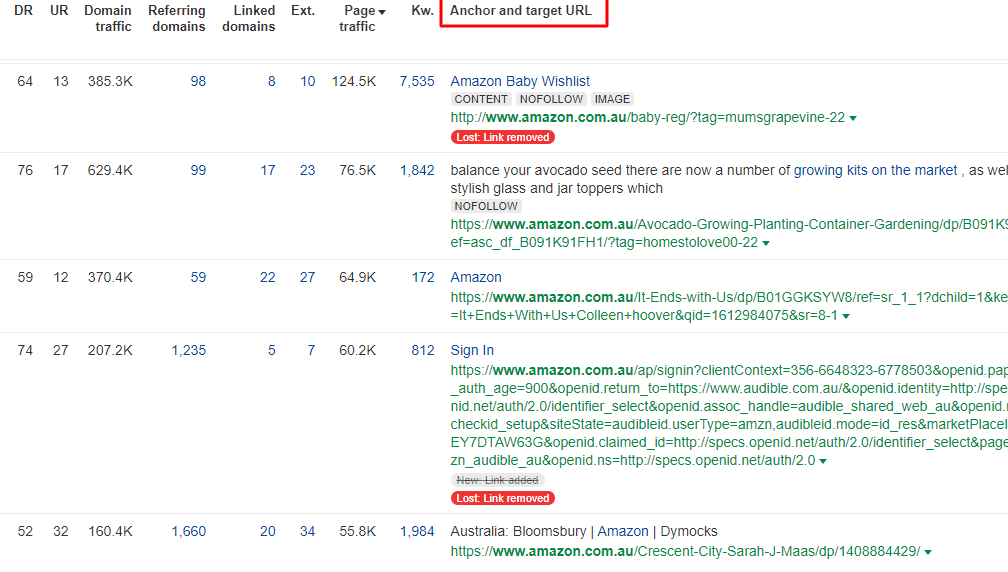How to Find, Analyse And Replicate Competitors’ Backlinks Effectively
They say, “The great strength lies in understanding your enemies and understanding yourself before the war.”
This is also true for digital brands who want to defeat their competitors on the Google SERP battlefield. Here, the backlinks and quality content are the two most valued factors Google considers when positioning web pages on search engine result pages (SERP).
Andrey Lipattasev — a senior search quality strategist at Google had already established that backlinks and content are two major ranking factors after Rankbrain.
Backlinks are the firepower that your competitors may aggressively use to outrank you. The thing is you can also do the same by conducting a competitor backlink profile analysis and replicating the same.
Backlink analysis helps you understand how you fare against your competitors and discover new opportunities to acquire links. But what does backlink analysis mean and why does it matter so much in the SEO landscape? Let’s find out:
Competitor Backlink Analysis & Why It Matters?
As mentioned, SEO competitor backlinks are the most valued firepower and a top-ranking factor that Google and other search engines consider. It refers to the inbound links that point to your competitors’ websites used for outperforming others.
The analysis consists of finding all the do-follow and no-follow links from quality and unique referring sites acquired through various means.
Dofollow links are the ones where the link authority or the link juice of the referring domain passes to the destination site, boosting SERP rankings. Nofollow links do not pass any link authority, and thus, have a negligible impact on the SERP ranking.
Competitor analysis is an SEO tactic that involves finding and analysing backlinks using tools known as backlink checkers. These backlink checker tools provide you with a detailed view of the backlinks competitors have acquired.
Each tool presents different metrics such as total & unique referring domains, domain ranking/authority, anchor text, and others. Backlinks from quality domains matter a lot when you are competing in a cut-throat competition to rank higher than others.
Also, according to the Ahrefs study, 90.63% of the pages get zero traffic from Google searches, and the biggest reason is they don’t have any backlinks. It found that around 2% of the pages have 10+ backlinks while only 0.08% have 100+ backlinks.
Also, from the above graph, it’s observable that you need quality links for a good ranking at SERP. The first place to look for the same is your top competitors. Competitor backlinks help you analyse their link-building patterns, history, quality of links, and types of inbound links.
Such insights would benefit you to outperform your competitors in their own game. That said, let’s see how you can find competitor backlinks.
How To Find Backlinks of Your Competitors?
The first step of how to check competitor backlinks is finding the top competitors you’ll be contesting against for traffic and rankings. Here’s the complete process to begin your competitor backlink analysis:
Identify & Segment Your Primary Competitors
Your top competitors are the ones that operate in the same niche as your business. For instance, if you operate in SaaS or real estate industries, your competitors will also belong to the same industry.
You can simply find your competitors by searching on Google using the keywords or terms you want to rank for. Search terms help you come up with the top competitors you are up against. Don’t just use plain keywords as they’ll generate different results than what an average person sees.
For accurate results, use search terms that generate a list of sites that compete against yours. This list will consist of your direct and page-level competitors. Direct competitors belong to the same industry as you and use the same range of keywords to compete against you on all levels.
Page-level competitors are not your direct competitors but have certain pages that outrank your primary pages for some SEO keywords. Thus, it becomes necessary to segment these competitors and analyse their backlinks differently.
By not segmenting your competitors, you’d be risking your backlink analysis to end up with inconclusive results. But once you’ve done so, the next step is to use backlink tracker tools to find what links your competitors have built.
Free Tools to Use for Backlink Tracking
Once you are adorned with the list of your direct and page-level competitors, use free competitor backlink analysis tools. Here are some free tools you can try:
These small business tools provide you with basic details to extensive reports and valuable insights into your competitor's strategy. They offer a variety of features for backlink research and management with no restrictions at all.
For instance, OpenLinkProfile provides you with the below dashboard of link profile analysis:
However, tools like Google Search Console and Ahrefs backlink checker have certain limitations. They only allow you with limited information about your competitor backlinks or limit showing the number of backlinks for a domain or page.
Furthermore, you won’t have access to in-depth backlink reports & analysis and identify new link-building opportunities. Thus, it’s best to use paid tools for extensive research and detailed insights.
Paid Tools for Backlink Tracking
Paid backlink tracking tools include:
Apart from in-depth analysis of your competitor backlinks, these tools provide you with a comprehensive SEO toolkit. They further help improve the SEO performance of your site in addition to spying on your competitors too.
Using these tools, you can track the number of backlinks your competitors have gained and lost in previous months. Further, these tools serve numerous other purposes such as keyword research, content gap, site SEO audits, and others so that you don’t have to spend money elsewhere.
Many tools on the list also allow you to compare the link profiles of several competitors simultaneously to see how they fare against each other. Additionally, you can apply several filters to only see the relevant and quality backlinks from high domain authority and ranking.
Here’s an example of Amazon Australia:
Further, you can export the list of your competitor backlinks from unique domains to begin your link-building process. Doing so will help you to form a strategy to analyse and beat your competitors effectively.
Things to Analyse In Competitors' Backlinks
Now that you have identified your direct and page-level competitors and used tools to find backlinks, it’s time to start competitor backlink analysis. Here, you’ll scrutinise several aspects and metrics of backlinks your competitors have built.
So, let’s get on with conducting a backlink audit:
Find & Analyse Most-Linked Pages
The first thing you want to do is analyse the most-linked pages of your competitors. To identify these, open the desired backlink analysis tool and enter the domain of your competitors. This will show all the backlinks it has garnered over the years.
Add a filter to find the top pages that generated the most backlinks. For instance, use the “Best by links” option from the side panel to see what pages are most linked-to on your competitors. Here’s an example of Amazon.com.au:
Now, pinpoint the factors such as page content, structure, optimisation level and others to see how it differentiates from you and the rest of the competitors.
Also, analyse what content format they have utilised and which one is best suitable for your industry. Doing so gives you ideas you can leverage to build links for your digital brand.
Analyse Competitors’ Backlink Profile Against Yours
Analysing and comparing your backlink profile against your competitors reveals a backlink gap that you need to fill in. Many backlink tractors provide a Backlink Gap tool to compare the link profiles of multiple domains side-by-side.
Here’s an example from Ahrefs:
Comparing the backlink profiles will help you quickly analyse the number of backlinks, unique referring domains, authority score, etc. This gives you a picture of how far behind your website is or how close you are to catch up with your competitors.
You can even get more specific with this comparison to find link-building opportunities you’re missing. Further, you can filter the referring domains to find the ones with the best authority scores.
Analyse Backlink Quality and Relevancy
The high-quality backlink refers to a do-follow link coming from high authority/ranking domains, which is placed relevantly in the body of the text. The quality backlinks are placed in the keyword or the variation of the keyword known as an anchor text.
Analysing the backlink quality is important as it helps determine how much link authority or link juice will pass to your page. Links acquired from irrelevant sources, for instance, healthcare businesses getting links from eCommerce platforms don’t impact your SERP rankings much.
Here are the five criteria to analyse backlinks to determine link quality:
- Relevant anchor text
- Linking page content quality and relevancy
- Domain authority/ranking and relevance
- IP address
- Link Location
Anchor Text Used
Anchor text forms an important part of the backlinks. It’s a clickable text that usually appears in a different colour than the surrounding text and tells readers what they can expect once they click on the same.
Your job here is to analyse the different anchor texts used by your competitors that point to the same page. Since search engines understand the correlation between linked articles and the text used, it should feel natural and enticing for readers.
Does the anchor text used by your competitors feel natural and enticing? Use the suggested competitor backlink analysis tools above to view anchor texts for all the backlinks your competitors have acquired. Here’s an example from Ahrefs:
Next, find ways how you can do it better and beat your competitors in link placement relevancy.
Steps to Replicate the Competitor Backlinks for Your Site
Now that you have found and analysed the backlinks competitors have built, it’s time to replicate the same for your own website. Here’s a stepwise approach to help you with it:
Step - 1: Make a list of quality and relevant referring domains
First, make a list of your top competitors and the quality backlinks they have acquired from unique referring domains. Open any tool listed above and enter the domain of your competitors.
The tools will then generate the list of all backlinks, which you can filter to view only unique referring domains. Now, export this backlink profile of your competitors in excel or CSV to move on to the next step.
Step - 2: Find out how competitors acquired those backlinks
Next, find what tactics your competitors have used for acquiring links from the above list. Did they use journalistic outreach, blogger outreach, link insertion, broken link building, linkable assets, or something else?
Assess the link profile and find what link-building tactics seem to dominate. Knowing this will inspire your link-building strategies and help you make informed decisions about the same.
Step - 3: Filter the best-fit opportunities
Now that you know the tactics adopted by your competitors, filter the best-fit opportunities more suited to your business niche. You can also filter out spammy or irrelevant link-building such as directory submissions and only focus on the best ones.
Doing so helps you formulate the strategies for link acquisition and get started with your link-building.
Step - 4: Start Building Backlinks
Once you are adorned with best-fit opportunities to build links, the next step is to start building links. Here, you create linkable assets or high-value posts/guest posts that generate a ton of links for you.
For guest posts, you’d have to find the contact info of niche publishers and present them with compelling content that naturally fits the link to your website. Further, you can investigate and find broken link opportunities to replace those with your live links.
Additionally, create high-value linkable assets that naturally inspire others to link your page and help you gain backlinks.
Step - 5: Scour other link-building opportunities
In addition to the above link-building strategies adopted by your competitors, there'll be a few others that you can adopt. From this large pile of competitor backlink data, scour other backlink opportunities that are easy and effective to replicate.
For instance, many competitors may have used custom graphic link building where publishers use custom images and give attributes to your competitors. You can also do something similar and acquire as many links as possible to outrank your competitors in SERP.
Final Words
That was a wrap on finding, analysing, and replicating competitors’ backlinks effectively. Competitor backlink analysis is not a simple procedure and requires a core understanding of who your competitors are and how they have utilised different link-building strategies.
The process starts with identifying and segmenting your competitors and then performing data-driven analysis. However, it gets complicated when it comes to replicating the link-building opportunities your competitors have used.
That’s where an adept SEO agency such as Supple comes in. Our seasoned professionals use advanced analysis tools to scrutinise your competitors and formulate a strategy best suited to your brand that can outperform your competitors.
Contact us to consult our SEO experts for all your link-building, competitor analysis, and other SEO needs.
DIGITAL MARKETING FOR ALL OF AUSTRALIA
- SEO AgencyMelbourne
- SEO AgencySydney
- SEO AgencyBrisbane
- SEO AgencyAdelaide
- SEO AgencyPerth
- SEO AgencyCanberra
- SEO AgencyHobart
- SEO AgencyDarwin
- SEO AgencyGold Coast
- We work with all businesses across Australia










